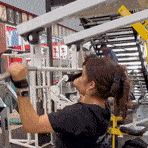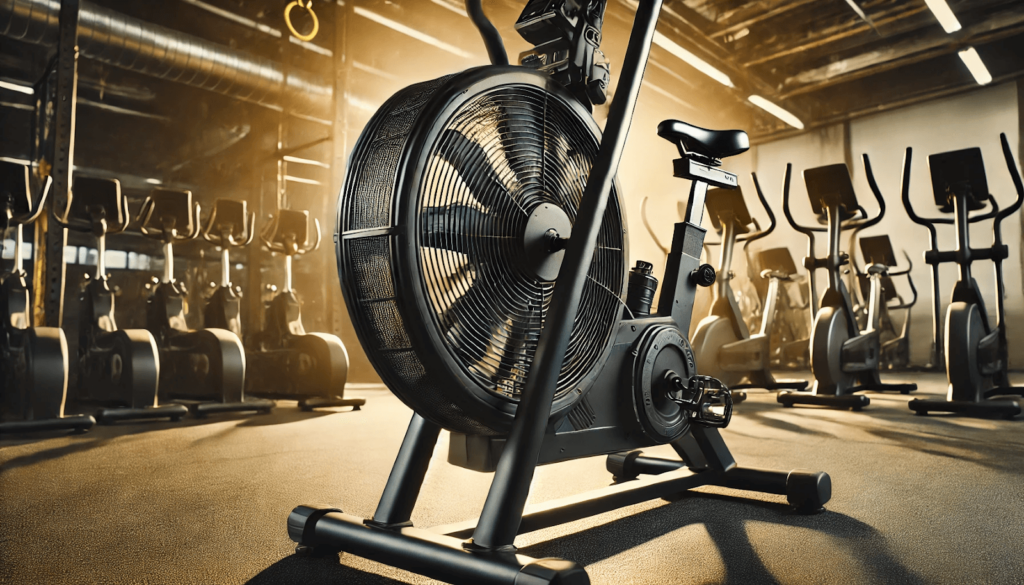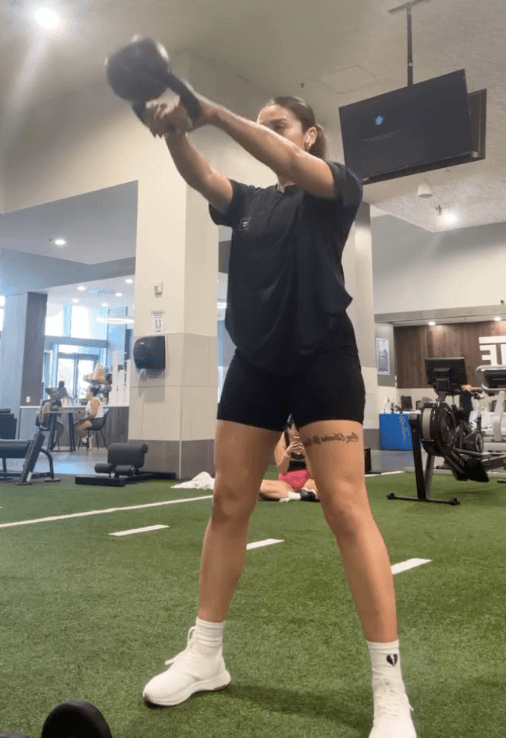A 10-minute read.
Homies! Let’s talk about body recomposition. You know, that magical process that is supposed to be how to gain muscle and lose fat at the same time? Sounds too good to be true.
Well, buckle up, because I’m about to put you on. We’re gonna show you how it’s not only possible but also a more sustainable approach for most regular people1.
Now, before we dive in, let’s get real for a second. Body recomposition isn’t a quick fix. It takes longer than the traditional bulk-and-cut cycles that bodybuilders use. But here’s the thing – for the average person just trying to look good and feel healthy, recomping is often more sustainable…
Why? Because you’re building habits, you can stick with for life, not yo-yo-ing between extreme diets and workout routines. In the end, slow and steady wins the race, am I right?
So, without further ado, let’s get into the 10 steps that show you how to gain muscle and lose fat like a boss!
1. Understand What Body Recomposition Really Means
First, let’s break down what we’re talking about here. Body recomposition is all about changing your body composition – that means reducing your body fat percentage while increasing your muscle mass. It’s like giving your body a total makeover from the inside out! It is how to gain muscle and lose fat at the same time.
Now, I’ve been on both sides of this fence. Back in my bodybuilding days, I did those extreme bulk and cut cycles. And let me tell you, if you want to pack on a massive amount of muscle quickly and then get shredded, that’s definitely the time-effective way to do it. But here’s the catch – it’s not the most mentally or physically sustainable approach for most people.
That’s where body recomposition comes in. It’s a slower process, sure, but it’s way more sustainable for us average homies and homettes :). Instead of swinging between extremes, you’re making steady progress towards your goals while building habits you can actually stick with long-term.
So, if you’re not planning to step on a bodybuilding stage anytime soon (and that’s super dope if you are! Please fill me in on all the deets!!), body recomposition might just be your ticket to looking good, feeling great, and staying sane in the process.
2. Set Realistic Expectations
Here’s the deal – body recomposition takes time.
We’re talking months, not weeks. But don’t let that discourage you! Remember, you’re playing the long game here.
You might not see dramatic changes on the scale right away, but you’ll notice your clothes fitting better, your energy levels increasing, and your strength improving in the gym2.
3. Nail Your Nutrition with Calorie Cycling

Alright, Dopefam, let’s talk about the real MVP of body recomposition: calorie cycling. Now, it’s important to note that calorie cycling isn’t the ONLY way to recomp, but it’s a great, tried and true way to achieve it. For many, this is the secret sauce that makes losing fat and gaining muscle possible3. Let’s break it down:
Calorie cycling is all about strategically adjusting your calorie intake throughout the week. Here’s how it works:
- On training days (especially heavy-lifting days), you eat at or slightly above your maintenance calories. This gives your body the fuel to crush your workouts and build that lean muscle. (If you need assistance figuring out your maintenance calories, we can help with that!)
- On rest days or light cardio days, you eat in a slight calorie deficit. This encourages your body to tap into those fat stores for energy4.
You might be thinking, “But chef dopeness, isn’t this just like mini-bulk and cut cycles?” Not quite! The key difference is that we’re making these adjustments daily, not over weeks or months. This allows your body to stay in a sweet spot where it’s building muscle without storing excess fat. This Is how to gain muscle and lose fat.
Here’s why calorie cycling is so effective for body recomposition:
- It supports muscle growth: By providing extra calories on training days, you give your body the building blocks it needs to repair and grow muscle tissue.
- It promotes fat loss: The calorie deficit on rest days encourages your body to use stored fat for energy.
- It keeps your metabolism up: Constantly changing your calorie intake prevents your body from adapting and slowing down your metabolism.
- It’s more sustainable: You’re not stuck in a constant calorie deficit, which can be hard to maintain long-term.
3.1 How to Calorie Cycle
So, how do you put this into practice? Here’s a simple way to start:
- Calculate your maintenance calories (there are plenty of online calculators for this).
- On training days, eat at maintenance or add 10-20% more calories.
- On rest days, reduce your calories by 10-20% below maintenance.
- Keep your protein intake high and consistent every day (remember that 1.6-2.2g per kg of body weight we talked about).
For example, let’s say your maintenance calories are 2000 per day. Your week might look like this:
- Monday (heavy lifting): 2200 calories
- Tuesday (rest): 1800 calories
- Wednesday (cardio): 1800 calories
- Thursday (heavy lifting): 2200 calories
- Friday (rest): 1800 calories
- Saturday (heavy lifting): 2200 calories
- Sunday (light cardio): 1800 calories
Remember, these are just examples. You’ll need to adjust based on your body, activity level, and goals. And don’t forget about those other nutritional factors we mentioned – balanced macros, meal timing, and focusing on whole, nutrient-dense foods.
Calorie cycling takes more planning than a straight bulk or cut, but trust me, it’s worth it. This is what allows you to work towards your goals consistently, without those dramatic swings in weight or energy levels. It’s all about finding that sweet spot where your body is happy to build muscle and burn fat simultaneously. (If you want a sure-fire way to kickstart your body recomposition and ensure you’re doing it right, we got you!)
3.2 The Magic of Calorie Cycling
Here’s the really cool part about calorie cycling – after a while, it starts to feel totally natural. Think about it: it makes sense to fuel more when you’re doing more, right?
As you get into the groove of body recomposition, you might find yourself naturally hungrier on training days and less hungry on rest days. Your body is smart like that! It’s trying to tell you what it needs. Listen to those hunger cues and work with them, not against them5.
Over time, this way of eating can become second nature. You’re not constantly counting calories or stressing about every bite. Instead, you’re tuning into your body’s needs and giving it what it requires to perform and recover.
The beauty of this approach is that it’s sustainable long-term. It’s not a rigid diet plan that you follow for a few weeks and then ditch. It’s a lifestyle that adapts to your needs, your schedule, and your goals.
Remember, Dopefam, the goal here isn’t to be perfect. It’s to create a healthy, sustainable relationship with food and exercise that supports your body recomposition goals. So don’t stress if you’re not hitting exact calorie targets every day. Focus on the overall pattern, listen to your body, and trust the process.
4. Embrace Resistance Training

If you want to build muscle (and trust me, you do. 75yr old you will thank you!), resistance training is your new best friend6.
Without resistance training, you’re missing the “gain muscle” in “how to gain muscle and lose fat.” Therefore, this is a fundamental aspect of body recomposition.
Aim for 3-4 strength sessions per week, focusing on compound movements like squats, deadlifts, and bench presses. These exercises give you the most bang for your buck, hitting multiple muscle groups at once.
5. Don’t Forget Cardio
Now, I know some of you might be thinking, “But chef dopeness, I thought cardio kills gains!”
Don’t worry, I’m not gonna make you run marathons. Incorporate 2-3 moderate-intensity cardio sessions per week to support fat loss without sacrificing those precious muscles7. Think brisk walks, light jogging, or even dancing around your living room (no judgment here!). If you’re a fan of HIIT, jump roping, running or any other form of cardio, feel free to incorporate that too!

6. Prioritize Recovery
Your muscles grow when you’re resting, not when you’re in the gym. Make sure you’re:
- Getting 7-9 hours of sleep per night
- Taking rest days between workouts
- Managing your stress levels (meditation, yoga, or Netflix binging – whatever works for you!)
7. Stay Consistent
Rome wasn’t built in a day, and neither is your dream body. The key to successful body recomp is consistency. Stick to your plan, even when you don’t feel like it. Remember, it’s about progress, not perfection.
8. Track Your Progress (But Not Just on the Scale)
When you’re doing body recomposition, the scale might not move much, or it might even go up! Don’t freak out – this is totally normal. Instead, focus on:
- Taking progress photos
- Track your measurements
- Tracking your strength gains in the gym
- Paying attention to how your clothes fit
9. Avoid Common Pitfalls

Watch out for these common mistakes:
- Crash dieting: Severely restricting calories will only sabotage your muscle-building efforts
- Neglecting progressive overload: If you’re not challenging your muscles, they won’t grow
- Overtraining: More is not always better. Give your body time to recover and grow
10. Be Patient and Trust the Process
Remember, body recomposition is a marathon, not a sprint. It might take longer than traditional bulk-and-cut cycles, but the results are more sustainable. You’re not just changing your body; you’re changing your lifestyle. And that, my friends, is what leads to long-term success and is how to gain muscle and lose fat.
So there you have it, Dopefam – your 10-step guide to successful body recomposition! This approach might take a bit longer, but it’s a more sustainable way for the average person to achieve their fitness goals. No extreme diets, no crazy workout routines – just consistent, healthy habits that you can maintain for life.
Ready to start your body recomposition journey? Let me help you out! Check out our meal options at Meals of Dopeness to fuel your transformation, or recruit me as your personal body recomposition guru to guide you on your journey to a leaner, more muscular physique.
Got questions? Drop them in the comments below, and I’ll gladly help! And don’t forget to share your progress with me – I love seeing your progress on the journey to success!
Stay healthy, stay consistent ;), stay dope!💪🔥
Relevant Readings:
- How to Maximize Meals of Dopeness Meal Prep for Serious Muscle Gains [7 Tips]
- Adapting and Overcoming: How to Keep Your Fitness Journey on Track When Injury Strikes (Training Through Injuries)
- How to Rest and Recover: The 3 Pillars: Sleep, Hydration, Nutrition + BONUS: Active Recovery Ideas
- 5 Tips to Never Miss a Workout (And Actually Enjoy It!)
- The #1 Muscle Building Secret: Unlocking the Mind-Muscle Connection
- Tinsley, G. M., & Willoughby, D. S. (2016). Fat-free mass changes during ketogenic diets and the potential role of resistance training. International Journal of Sport Nutrition and Exercise Metabolism, 26(1), 78-92. https://pubmed.ncbi.nlm.nih.gov/26284291/ ↩︎
- Cava, E., Yeat, N. C., & Mittendorfer, B. (2017). Preserving healthy muscle during weight loss. Advances in Nutrition, 8(3), 511-519. https://academic.oup.com/advances/article/8/3/511/4558127 ↩︎
- Byrne, N. M., Sainsbury, A., King, N. A., Hills, A. P., & Wood, R. E. (2018). Intermittent energy restriction improves weight loss efficiency in obese men: the MATADOR study. International Journal of Obesity, 42(2), 129-138. https://www.nature.com/articles/ijo2017206 ↩︎
- Helms, E. R., Aragon, A. A., & Fitschen, P. J. (2014). Evidence-based recommendations for natural bodybuilding contest preparation: nutrition and supplementation. Journal of the International Society of Sports Nutrition, 11(1), 20. https://jissn.biomedcentral.com/articles/10.1186/1550-2783-11-20 ↩︎
- Jäger, R., Kerksick, C. M., Campbell, B. I., Cribb, P. J., Wells, S. D., Skwiat, T. M., … & Antonio, J. (2017). International Society of Sports Nutrition Position Stand: protein and exercise. Journal of the International Society of Sports Nutrition, 14(1), 20. https://jissn.biomedcentral.com/articles/10.1186/s12970-017-0177-8 ↩︎
- Schoenfeld, B. J., Grgic, J., Ogborn, D., & Krieger, J. W. (2017). Strength and hypertrophy adaptations between low-vs. high-load resistance training: a systematic review and meta-analysis. Journal of Strength and Conditioning Research, 31(12), 3508-3523. https://pubmed.ncbi.nlm.nih.gov/28834797/
↩︎ - Longland, T. M., Oikawa, S. Y., Mitchell, C. J., Devries, M. C., & Phillips, S. M. (2016). Higher compared with lower dietary protein during an energy deficit combined with intense exercise promotes greater lean mass gain and fat mass loss: a randomized trial. The American Journal of Clinical Nutrition, 103(3), 738-746. https://academic.oup.com/ajcn/article/103/3/738/4564609 ↩︎

Leave a Reply